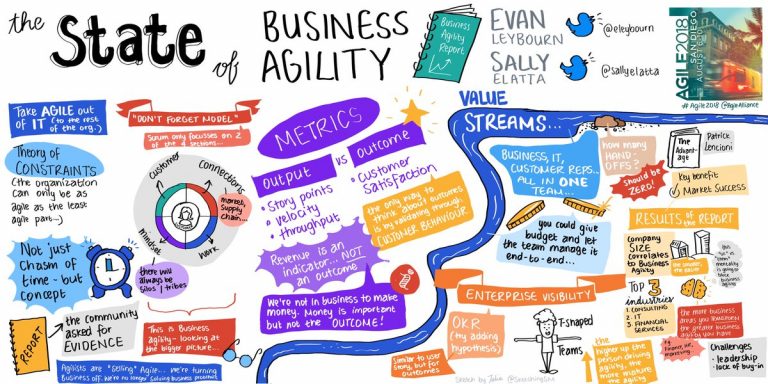Thin IT Operating Models
I want to put some thoughts down about future-state operating models. Something I am having a lot of conversations about with organisations who want to leverage faster leaner and smarter processes for increases in performance and profit.
What I’ve learnt to think about when assessing a companies as-is state is to look at what the foundational pillars of a next generation operating model should be. These in my mind are centered around;
#1 – Fully autonomous and cross-functional teams fully pollinated into the customer journeys, products and services.
What I mean by this is by changing the demarcation boundaries of how typical (often technology) teams work together bringing them out from their silo’s and into a more collaborative way of working, efficiencies can be often leveraged. This requires the teams to be truly empowered and coached on a self-organizing reshuffle to align how the various departments and teams could work to be more efficient by working in closer proximity, sharing more (and using appropriate tooling to help with that) and being more aligned to the value stream product aligned approach to business (see my post about IT4IT here) .
An example is in an aerospace company, with many teams often invisible to one another, working in a pass-the-baton format – the team receiving the baton is often caught off guard with problems, design issues, bugs and defects from the team who had the baton last. Simply by physically moving the teams to be together and applying some LEAN practices such as Kanban, daily stand ups and some coaching around Agile concepts, story pointing and backlog management for example, the teams can have much better inter-dependency visibility across their entire estate.
Fab image above from Talia, click on image to go to her Twitter.
#2 – Flexible, modular and scalable IT architecture and systems to allow for iterative and Agile software delivery
Often companies still release in a perceived-to-be safer waterfall fashion and then adopting agile mentality within each phase of the waterfall model. So more of a ‘WaterAgileFall’ type of state. This can slow product or service delivery down to a crawl and with which in today’s market, is mostly unacceptable.
Whilst development teams in themselves are often cutting edge using stringent DevOps practices or wanting to, they can often be limited by businesses inherent operational design. Leveraging a true CI/CD model to help ramp up product release can help organisations get to where they want to be quicker. But this requires both technical and operational consideration.

Tech leaders are investing heavily in DevOps and combining people, process and technology changes to automate areas such as software testing, software release, security elements, and delivery processes alongside infrastructural changes such as containerization and a serverless approach to software delivery.
#3 – Clear management strategy that communicates vision, goals and wants along with tighter feedback loops
I like this one. When I go into organisations to help them change, it’s rarely met with 100% positivity. It’s common the management team and above are rarely truly brought in and are paying lip service to the thought of being more Agile or being more efficient because they look at their peers, and think they need to be. I like to challenge these people and ask the question ‘why’ – as without their support and true understanding, change cannot be implemented.
Senior leaders need to be vocal champions for Agile in the Enterprise. Also using data and analytics tools to help provide full visibility into both team, department and business performance and sharing that information outwards with everyone can really help create a stronger culture who will want to continually improve, as oppose to having change thrust upon them. (more on that here)
I recently worked on a really tough operating model/vendor project. What I saw (which is something I see often) is a technical estate so complex and bespoke, it was nearly impossible to untangle and decouple things. It’s true you can’t apply industry standard frameworks to such complexity and tens of IT and technical people had spent years keeping the infrastructure going with limited resource.
What I also see in those scenarios is those very same people protecting ‘their bit’ sometimes failing to see a bigger picture. They fear (maybe correctly so) having their teams taken off them, or resource further dwindled, or using the complexity itself as a shield to protect any prospect of change.
This leaves organisations in a bind. Leadership teams reporting to executive boards and shareholders, needing to drive through operational change for capital release, profit increase, or to meet the next milestone, whereas the operational teams in the trenches often work to stop change through passive tactics to maintain a status quo.

I talk a lot about the people element of change all the time. The case above is one in point that without people buy-in, doing the simplest of things to seed any type of change is pretty impossible. It’s all about open honest communication. It’s about clear briefing. It’s about ensuring people are laser clear, even if they don’t’ like the journey.
New operating models which will be even more prominent in organisations of the future will be in existence due to the very nature of change within IT in business. Thanks to end-to-end automation, DevOps driven cloud adoption and low barrier-to-entry infrastructure tooling means non-IT people can now manage IT estate. The legacy monopoly the IT function of old had on Enterprise technology is gone.
I see the roles of CIO’s change – certainly now to more the type of person I am. I called this five to ten years ago and I’m happy about that. I built a career to help organisations get out of the battle with their incumbent IT departments. So now we’re looking at a more thinner IT model. With that, there’s going to be some uncomfortable questions asked.
We don’t look at on-premise Exchange servers anymore, or worry about on-site SAN capacity or even bandwidth in and out of the building to an expensive Data Center. We’re more concerned with Governance, Risk, Compliance, Cyber security standards and ensuring we can rapidly scale out at low cost iteratively no matter what the sector.
New operating models wont just happen tomorrow and it wont effect every company in the same way but through easier access to technology, increased adoption and the resulting thin IT construct raises some pretty serious questions.
What type of leader does a company running a thin IT model need? How will organisations find leaders who possess a combination of business and technology acumen?
Download
I’ve written a vendor agnostic (and what I think) is a decent start for a Operating Model which will suit as a starting point for a lot of organisations. You can download it here in both PDF and PPT format. If you’d like to understand the document more, reach out to me on Twitter @mariodc





